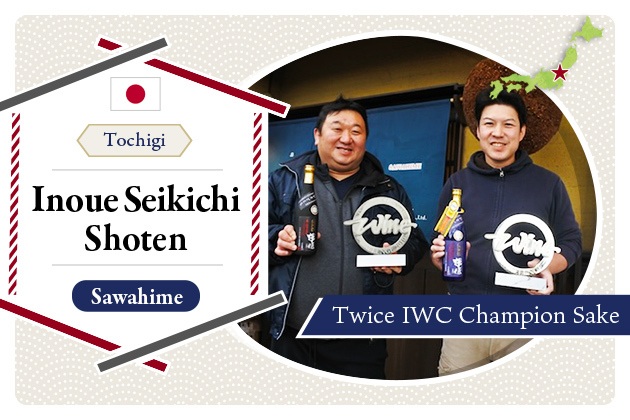
2022.07
09
What is futsu-shu? How to enjoy sake that is "not special"
What kind of sake is futsu-shu, or ordinary sake? Despite its claim to be "ordinary" or "common," one does not find sake that is labelled "futsu-shu (普通酒)" among many bottles in shops. Basically, sake can be categorized into premium (tokuteimeisho-shu (特定名称酒)) or ordinary sake (futsu-shu), and futsu-shu is what is not categorized as premium sake.
In this article, we will explain what futsu-shu is, along with how to enjoy it. Find out how to expand your sake choices!
What is futsu-shu?
Premium sake needs to satisfy the following conditions.
- Brewed only with rice, rice koji, and brewer’s alcohol. The volume of brewer’s alcohol used should be 10% or less of the total volume of rice
- Rice used is brown rice or rice polished from brown rice classified 3rd grade or superior
- Rice koji used is 15% or more of the total volume of rice
Premium sake includes 8 classes, each defined by rice polishing ratio (seimai buai) (1), use of brewer’s alcohol (2), and application of ginjo method (3).
| Class | Brewer's alcohol | Ginjo method | Rice polishing ratio |
|---|---|---|---|
| Junmai Daiginjo (純米大吟醸) | No | Yes | 50% or below |
| Junmai Ginjo (純米吟醸) | No | Yes | 60% or below |
| Tokubetsu Junmai (特別純米) | No | - | 60% or below, or particular brewing method |
| Junmai | No | - | - |
| Daiginjo (大吟醸) | Yes | Yes | 50% or below |
| Ginjo (吟醸) | Yes | Yes | 60% or below |
| Tokubetsu Honjozo (特別本醸造) | Yes | - | 60% or below, or particular brewing method |
| Honjozo (本醸造) | Yes | - | 70% or below |
- (1) Rice polishing ratio represents how much rice is polished (the figure is what remains of the grain; unpolished brown rice is 100%). Lower the figure, more outer part that causes off-flavors is shaved off.*
- (2) Brewer’s alcohol is edible alcohol brewed and distilled mainly from sugarcane. Adding brewer’s alcohol lightens the texture and enhances elegant aromas.*
- (3) Ginjo method involves slow fermentation in low temperatures with a goal to generate a specific floral aroma (ginjo aroma).*
Only those sake that satisfy certain standards can brand themselves to be one of the 8 classes of premium sake.
And sake that do not meet the above standards are futsu-shu. While premium sake classes are defined legally, futsu-shu is a vernacular term, and is not an official term—often described as "ippan-shu (general sake)."
If a label does not say "junmai," "ginjo," or "honjozo," then generally it is assumed that the sake is futsu-shu. Broadly, futsu-shu tends to impart mild aromas, and smooth, low-key flavors.
#What is known as kijo-shu(貴醸酒) is technically futsu-shu, as it includes sake other than rice, rice koji, and brewer’s alcohol in its ingredients. This article will focus on futsu-shu other than kijo-shu. To read more on kijo-shu, please go to the article below.
It is often considered that premium sake is brewed with more labor and time, whereas futsu-shu is cheap and not as tasty. However, many futsu-shu are brewed with a lot of care, so try including futsu-shu in your future choices—it may expand your sake horizons.
What are included in the futsu-shu category?
Cartons of sake that you see in supermarkets and what is presented simply as "sake" in izakaya menus are most likely futsu-shu. We will find that futsu-shu is everywhere in our life, if we pay closer attention. More specifically, futsu-shu includes the following kinds of sake.
- Sake with brewer’s alcohol added, and using rice polished to 70% or more
- Sake with more brewer’s alcohol added than allowed for honjozo
- Sake with sugars and acidifiers added to the ingredients
- Sake using unclassified rice
Year after year, the ratio of premium sake in the entire production volume has been increasing. And yet, futsu-shu still occupies 70% of total volume consumed in Japan, and is popular among drinkers as easily accessible sake.
How to enjoy futsu-shu
At reasonable prices, futsu-shu is popular as a drink that accompanies dinner or that one enjoys at home every night. Commonly, futsu-shu is meant to be consumed between room temperature and hot, and leisurely with food. Futsu-shu is very popular where it is produced, and often pairs quite well with regional traditional dishes. It is highly recommended that you try local futsu-shu in your travels. At Oginoya Gen, restaurant in Tokyo by Oginoya, famous for its Toge no Kamameshi (nationally recognized regional specialty of mixed rice in a claypot), futsu-shu from Gunma and Nagano are served. At a venue like this, you may enjoy a travel-like experience.
Oginoya Gen:https://oginoya.tokyo/yurakucho/concept
Of futsu-shu, nama genshu (unpasteurized, undiluted), or genshu (undiluted) tends to offer a rich aroma and robust flavor with a higher alcohol content. Some might be 19-20% abv, which may be suitable for drinking on the rocks—surprisingly refreshing. Once the ice starts melting, the alcohol gets diluted, so those who may be overwhelmed by the higher abv can give it a try. In hot summer days (or nights), pour a little sparkling water, and it can go down quite smoothly.** The sake is so robust in flavor that adding soda water will not dilute to the extent it may feel watery.
Further, you may explore making sake cocktails by mixing it with fruits or juices. Cassis can make an eye-catching and elegant cocktail. Instead of adding ice cubes, you may add frozen fruits found at convenience stores and supermarkets. Frozen mangoes and berries are easily available, and go well with moderate-flavored futsu-shu.
Futsu-shu does not overpower, and accompany food in a pleasant way—you can also experiment with various ways to drink. Find your unique ways to enjoy futsu-shu according to your mood or the season.
Summary
We have covered what kind of sake futsu-shu is. Futsu-shu is relatively cheap and easily found at a supermarket or convenience store, and quite prevalent in our everyday life, comprising a majority of our sake consumption.
Futsu-shu, unlike premium sake, is not "special sake." However, you may find some futsu-shu that are very carefully crafted. It is also something casual that you can enjoy various ways—on the rocks, with soda water, and using it as a base for cocktails.
Hopefully the article demonstrated that futsu-shu is "common" because it is "not special," and is "prevalent" with the majority market share. Futsu-shu is diverse, so we urge you to explore and find the one that you would like to always keep at home for your everyday consumption. We wish that you find your go-to futsu-shu, and your particular way to enjoy it.
Pickup Articles
2019.01.18
2019.01.25
Trending Articles
Popular Articles
Recent Articles













